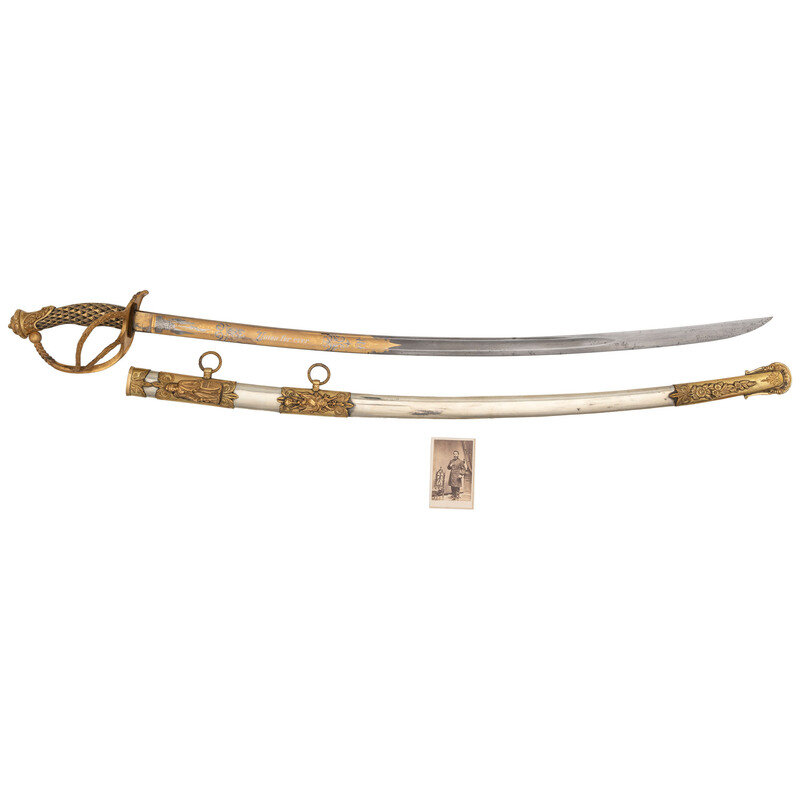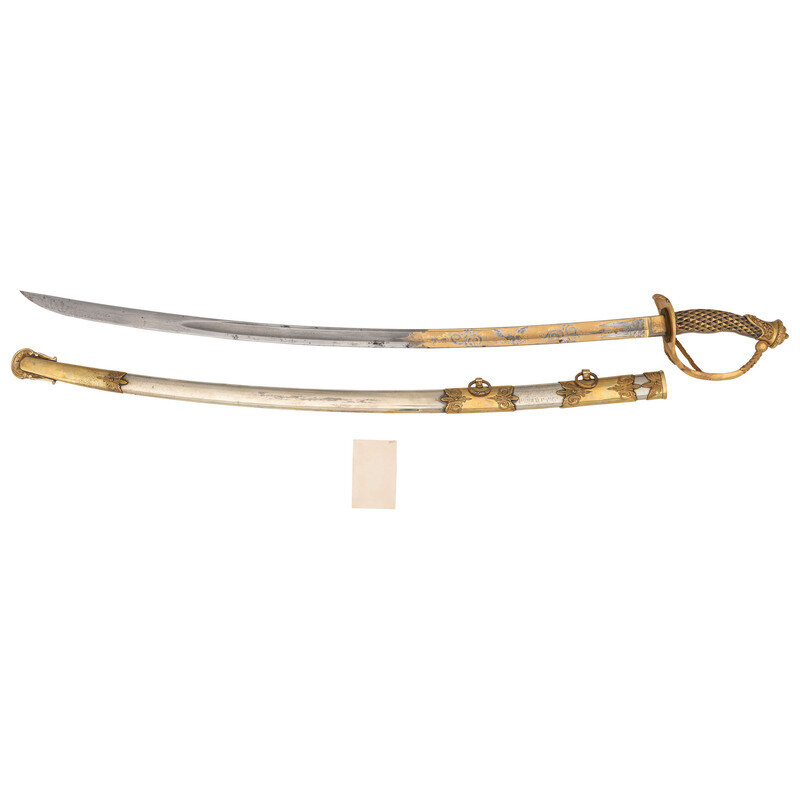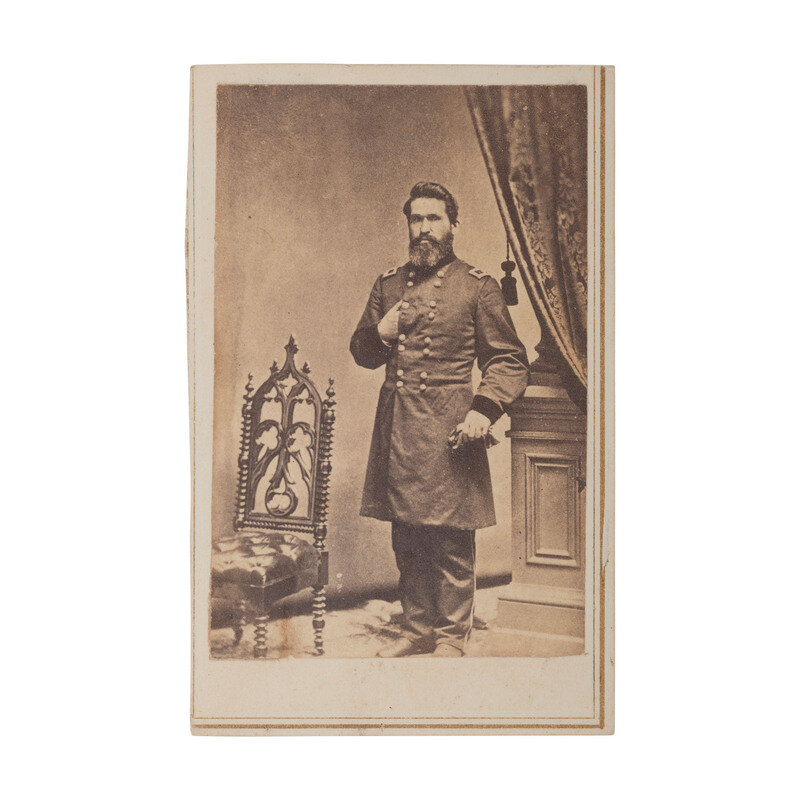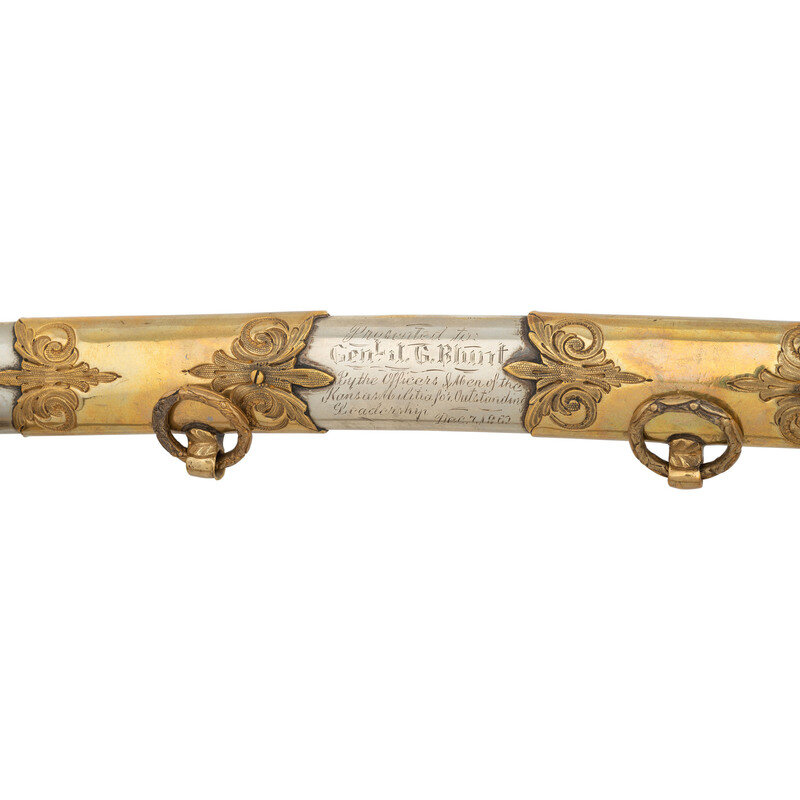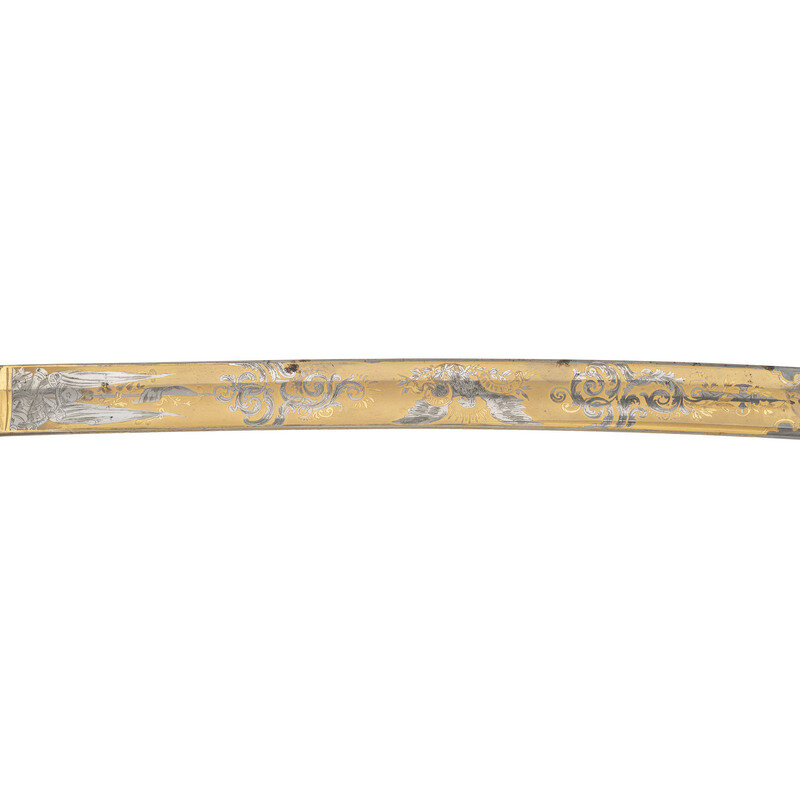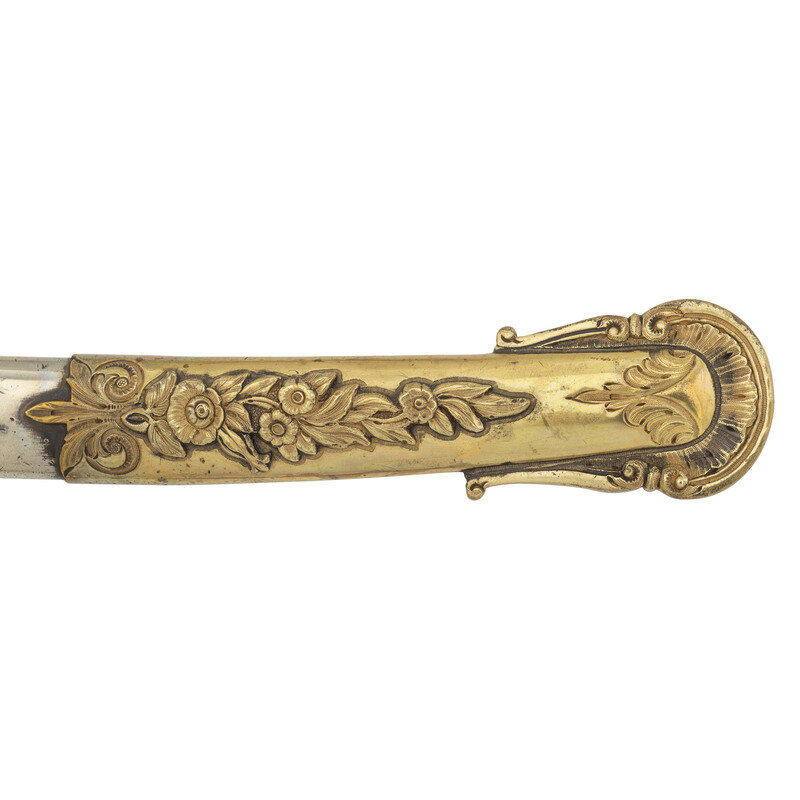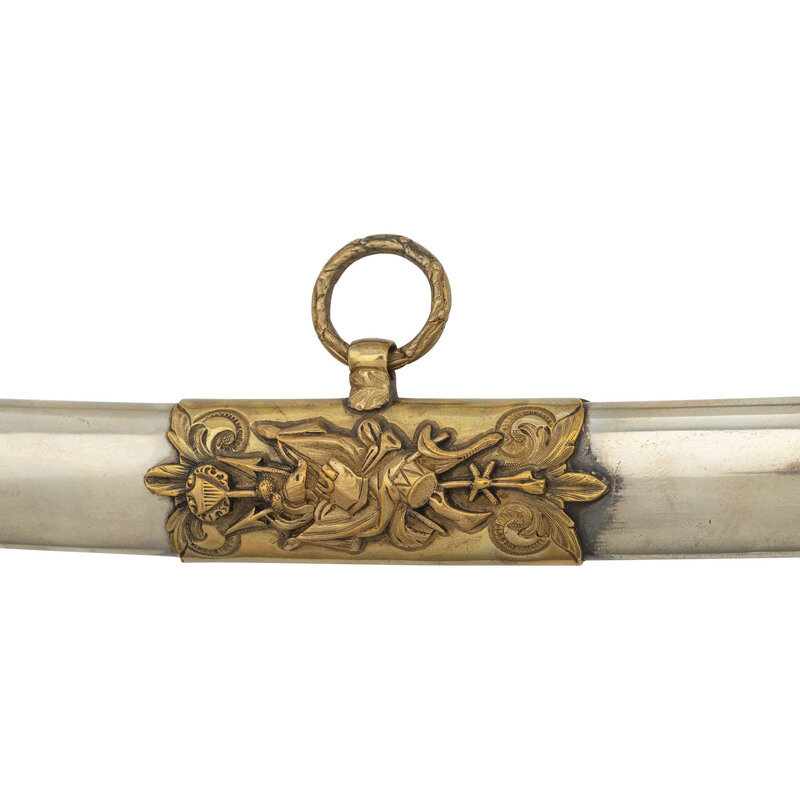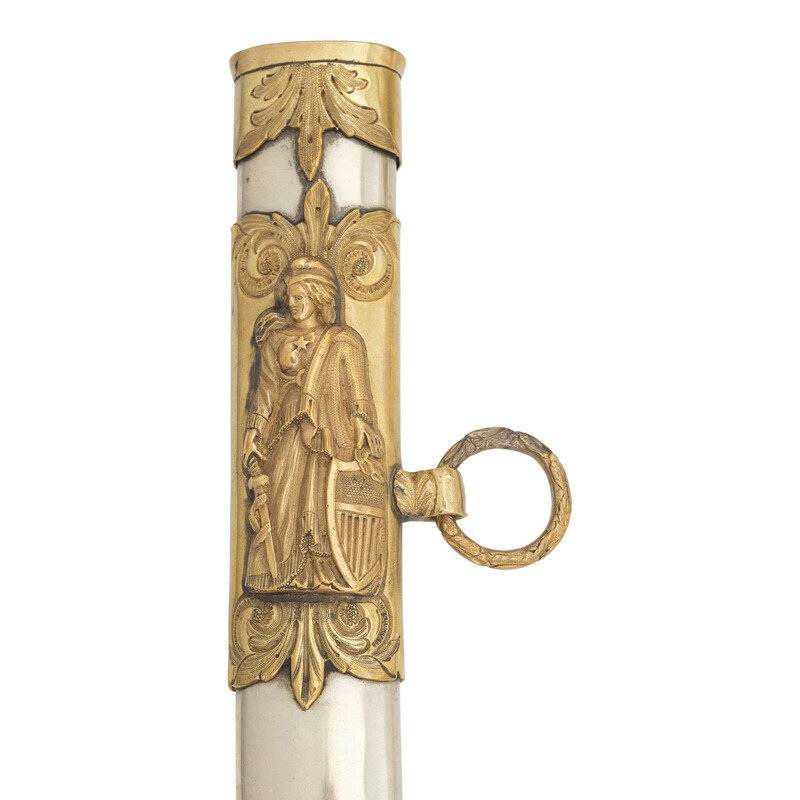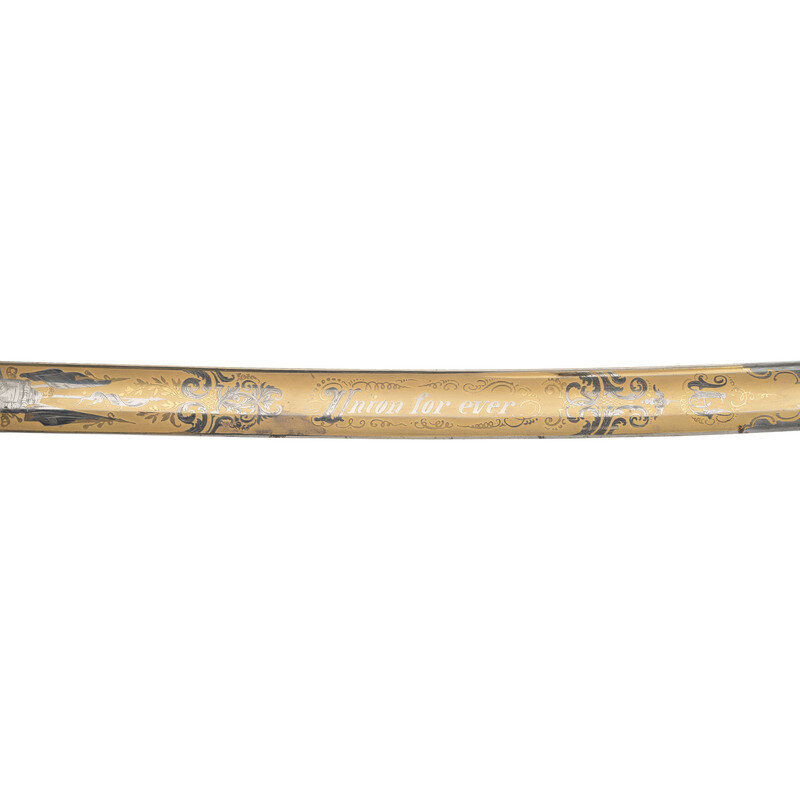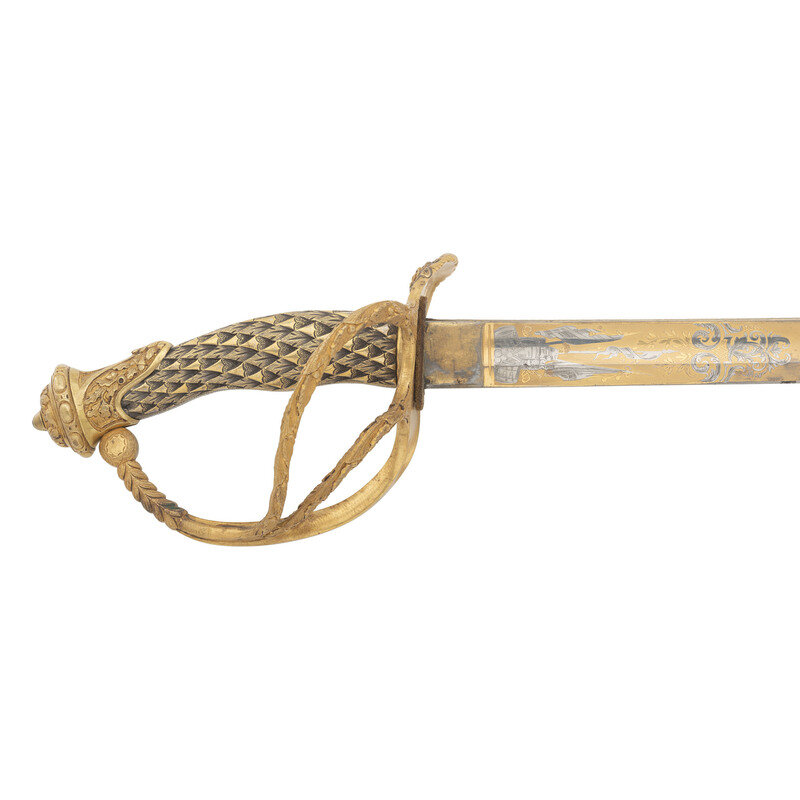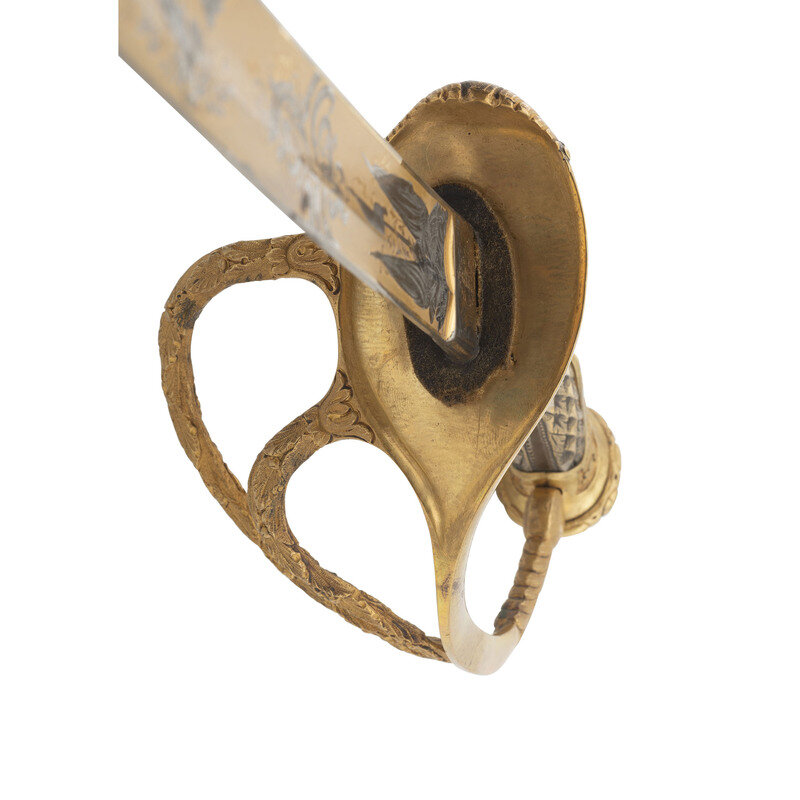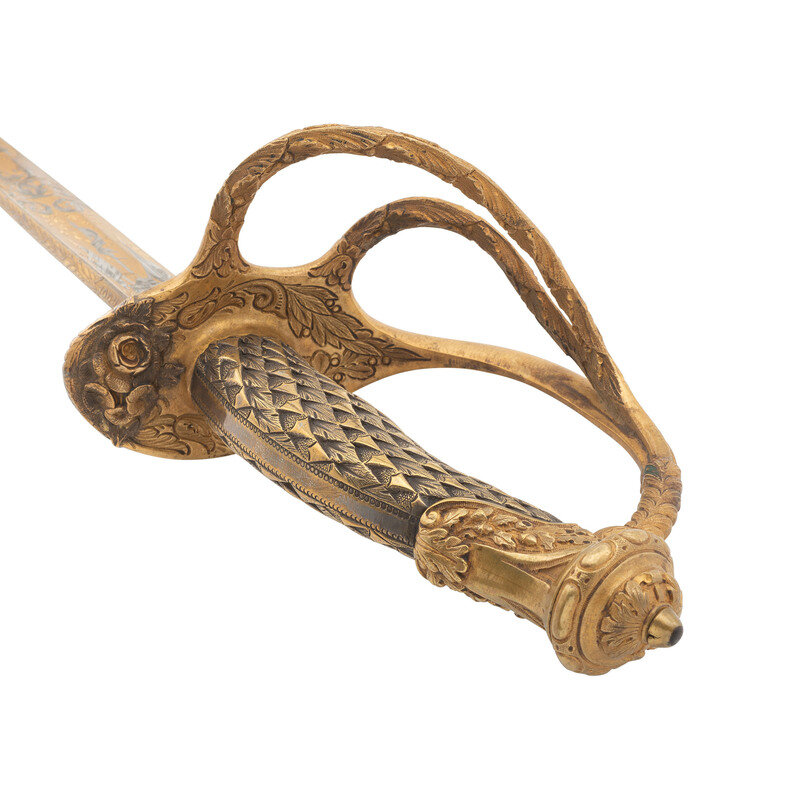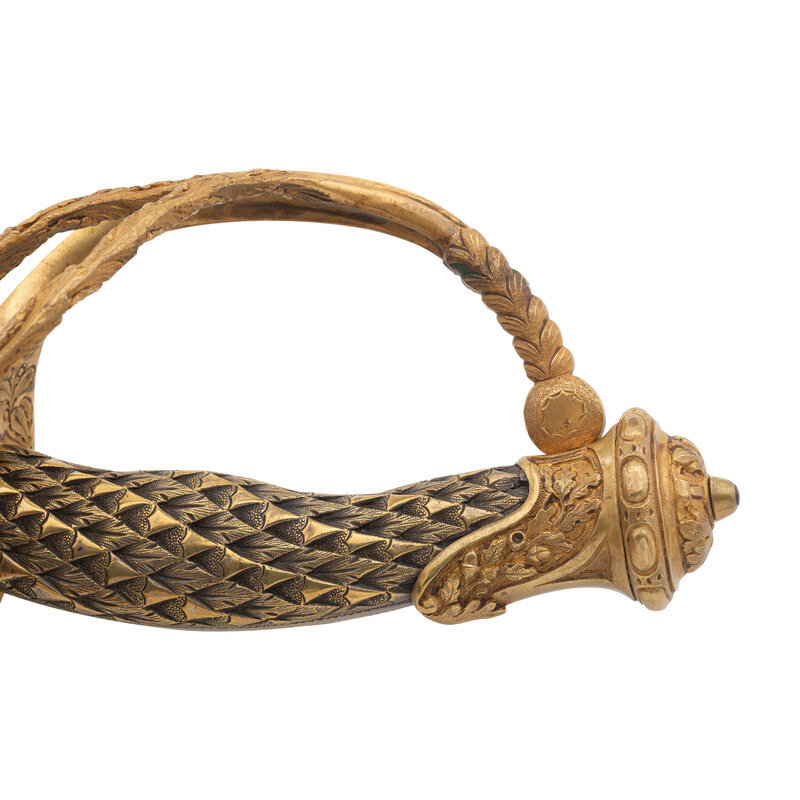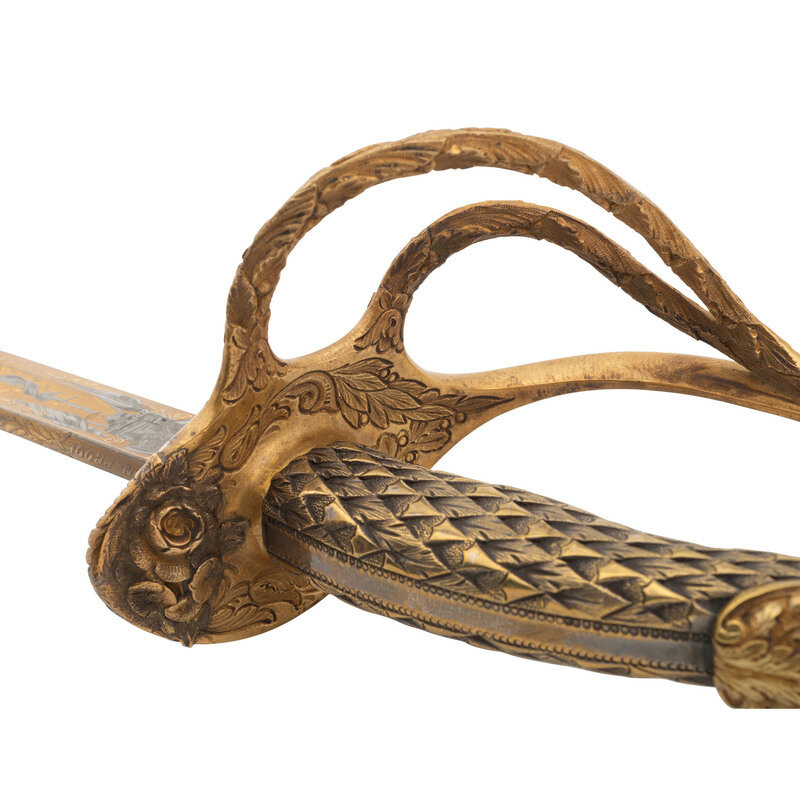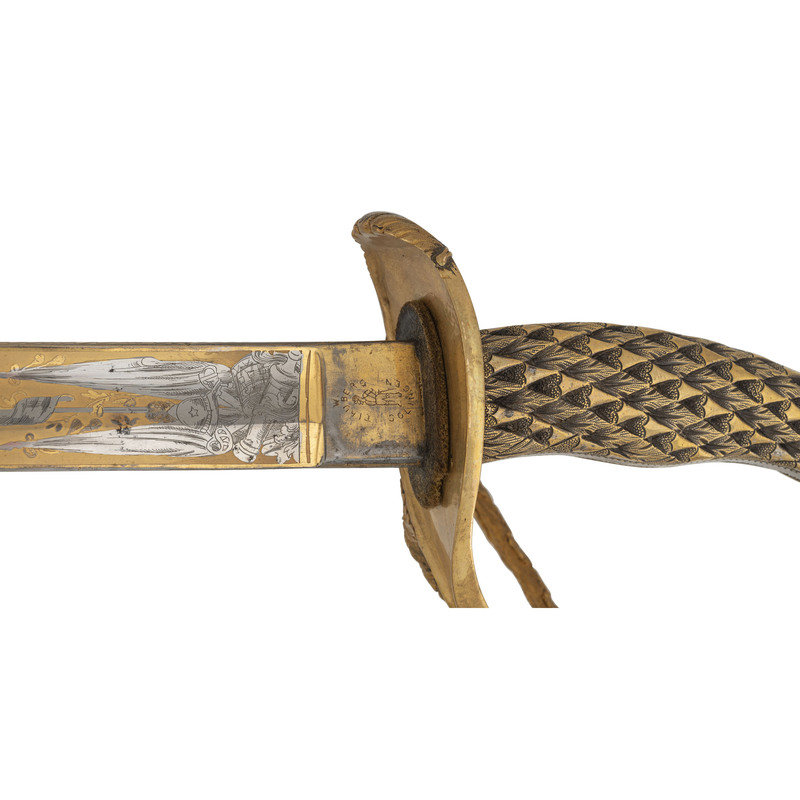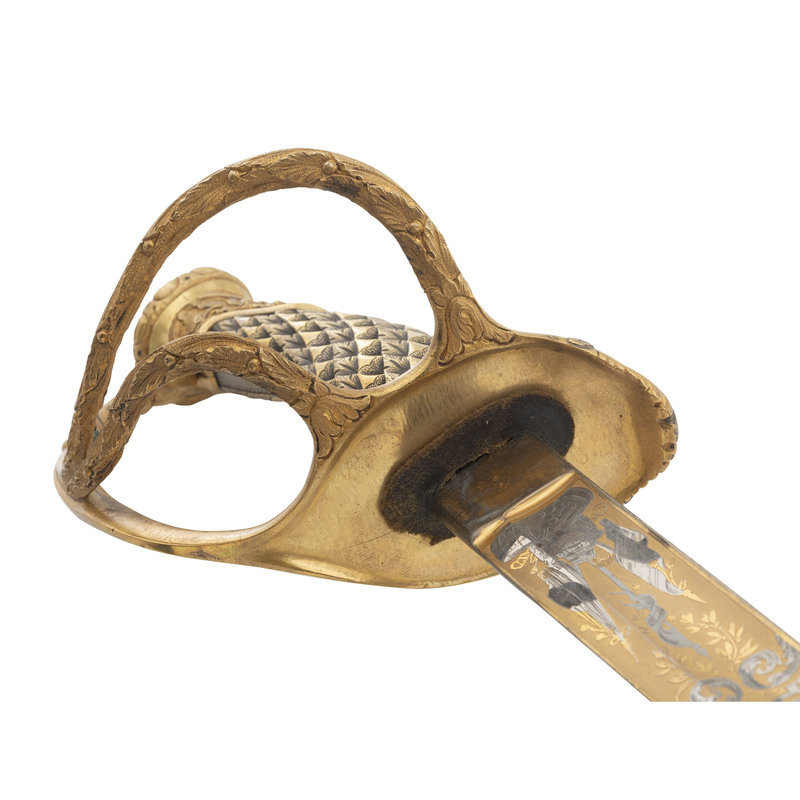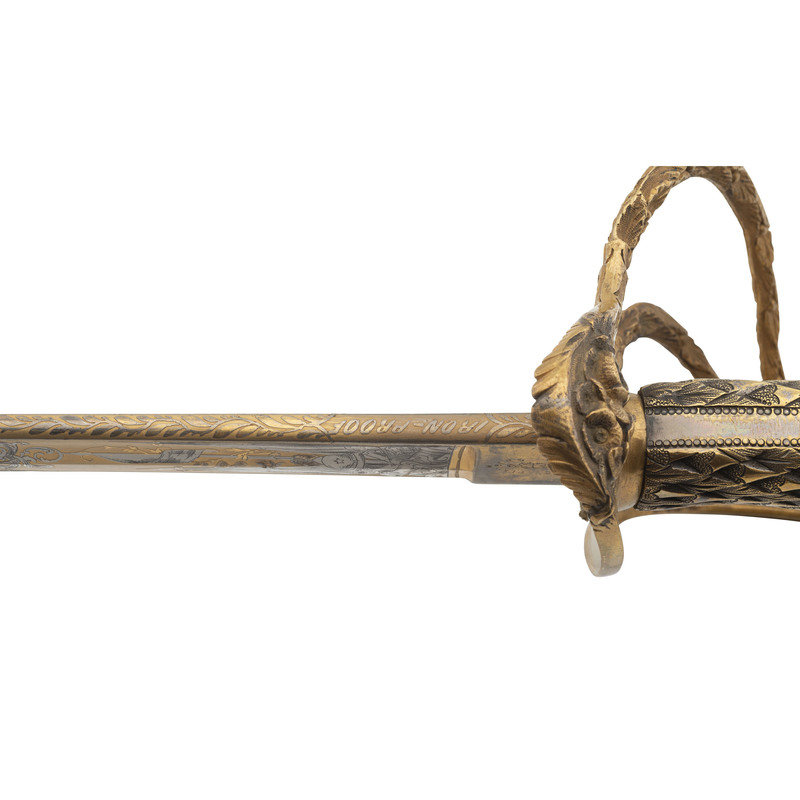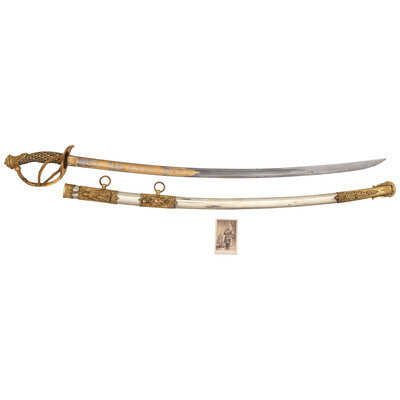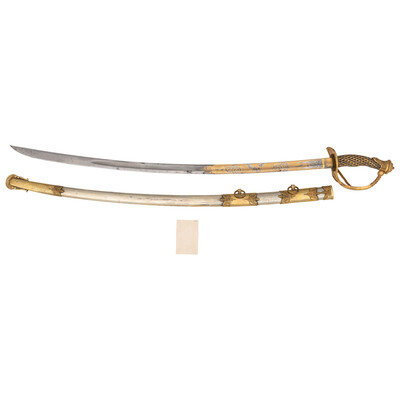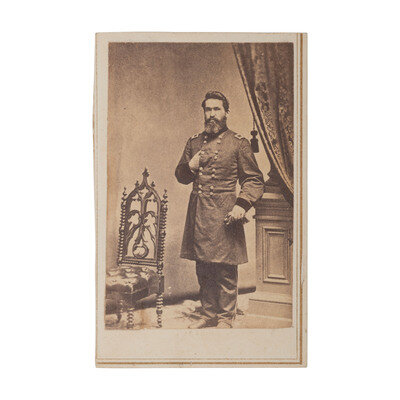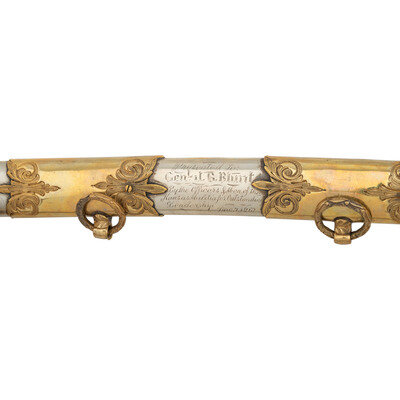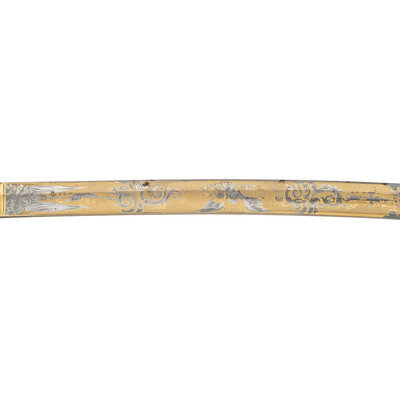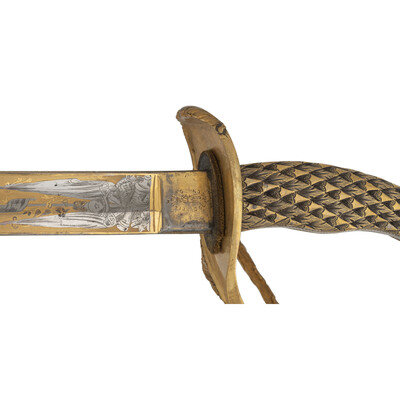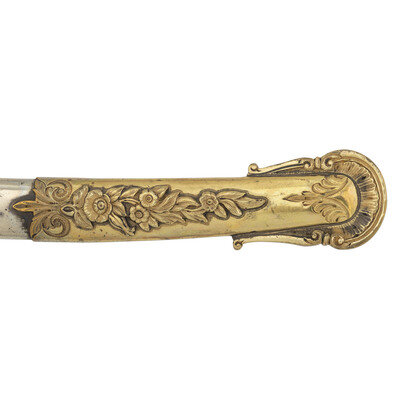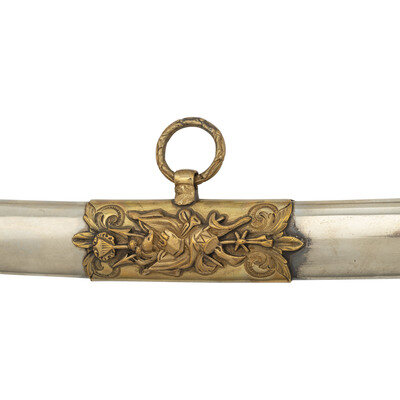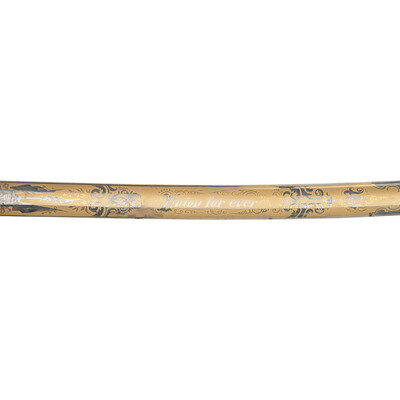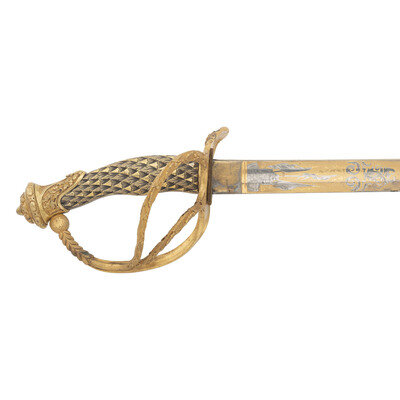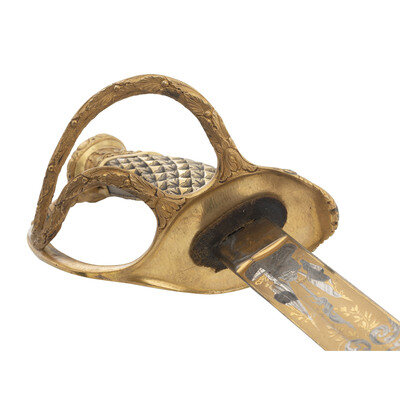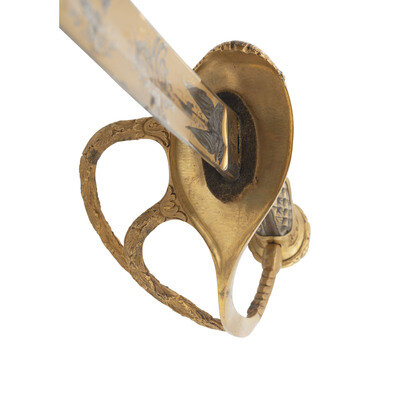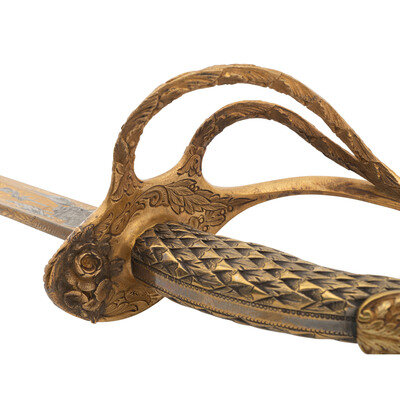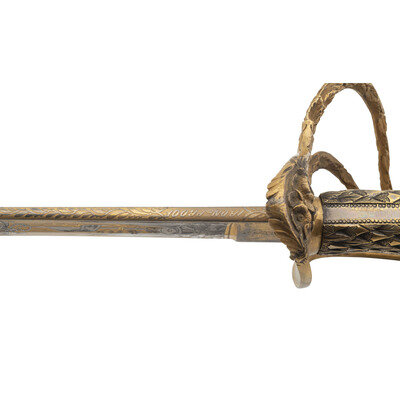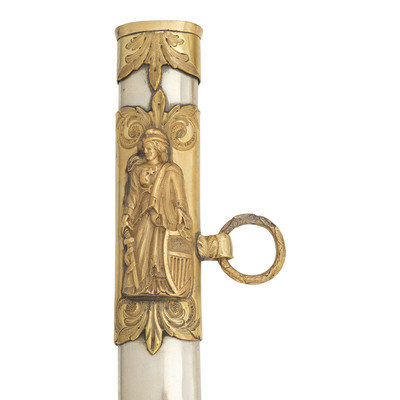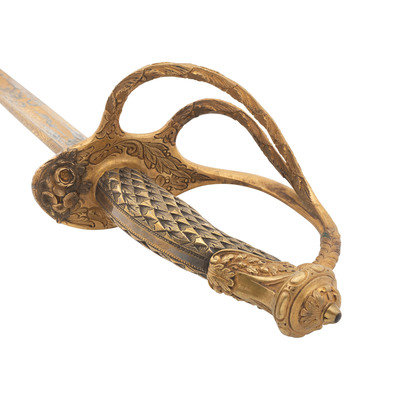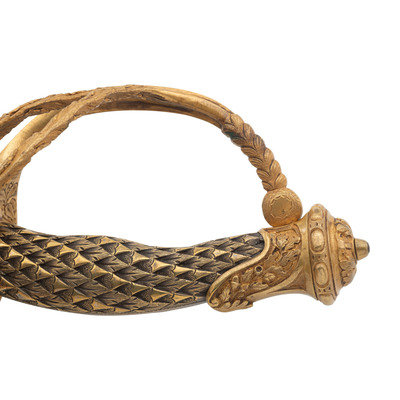Lot 58
34" curved single edged blade with a 24.5" stopped median fuller and a narrow 13" fuller at the spine, 1.125" wide at the ricasso. Overall length 41.75" with a 7" gilt brass hilt with two branches and a knuckle bow. Chiseled gold washed silver grip with highly decorated branches and guard. Leather washer at face of guard. Blade marked with the CLAUBERG / SOLINGEN trademark on the reverse ricasso. Blade etched with panoplies of arms, martial and patriotic themes and foliate patterns and gold washed. The central panel on the reverse is a spread-winged American eagle and the panel on the obverse reads Union for ever. The saber is accompanied by its gilt brass mounted silver scabbard with highly chiseled statuary mounts. Te reverse of the scabbard is engraved between the two suspension mounts Presented to / Genl. J. G. Blunt / By The Officers & Men of the / Kansas Militia for Outstanding / Leadership / Dec. 7, 1862. The saber is accompanied by a large binder of information about Blunt and his service, including copies of period images, copies of original correspondence and a clipped signature. A CDV of Blunt also accompanies the saber.
James G. Blunt (1826-1881) was born in Trenton, ME on July 21, 1826 and at the age of 15 went to sea until he was 20. At that time he removed to Columbus, OH and studied medicine at the Starling Medical College, graduating in 1849. He practiced medicine in Ohio until 1856 when he moved to Anderson County, KS. There he became active in local politics while continuing to practice medicine. He was a strongly anti-slavery man and worked to keep Kansas a free state. On July 24, 1861 he entered military service as a Lt. Colonel of the 3rd Kansas Volunteers (which would later be reorganized as the 10th Kansas Infantry). He served as the cavalry commander for Lane's brigade and was promoted to brigadier general on April 8, 1862 and was made the commander of the Military Department of Kansas. He led Union troops against the Confederacy at the battles of Old Fort Wayne (Oct. 22, 1862) and Cane Hill, AR (Nov. 28, 1862). The following day he was promoted to major general. His largest victory of the campaign took place on December 7, 1862 at Prairie Grove, AR. This is the date commemorated on the saber. He followed up this success by capturing Fort Van Buren, AR on December 28, 1862. In June of 1863 he was relieved of his command of the Department of Kansas and given command of the Army of the Frontier. During this time he won the battles of Honey Springs on July 16, 1863 and Newtonia, MO in October of 1864. He spent the remainder of the war as the military commander of the Department of South Kansas. He was mustered out of service on July 29, 1865 and settled in Leavenworth, KS. He died in 1881 in Washington, D.C.
